Android Central Labs

Android Central Labs is a weekly column dedicated to deep dives, experiments, and a targeted look into the tech you utilize. It covers telephones, tablets, and all the things in between.
I am a bit late within the sport, however I lastly obtained my fingers on the Samsung Galaxy S24 FE in late March so I might do some further testing. I take pleasure in digicam deep dives and show evaluation for Android Central Labs, and whereas I absolutely anticipated this to be a run-of-the-mill Samsung launch, the show actually stunned me.
But it surely’s not the colour accuracy or another “regular” show metric that impressed me. It is the Excessive Brightness Mode (HBM). This particular mode exists on all fashionable telephones and sometimes activates when the automated brightness sensor detects one thing as shiny as daylight. However the Galaxy S24 FE’s does one thing totally different from each different Samsung cellphone I’ve examined: it switches to DC dimming, unlocking the complete brightness potential of the show.
Usually, all Samsung Galaxy telephones with AMOLED screens use PWM dimming in any respect brightness ranges, withholding the show’s true most brightness stage. Not solely that, however PWM dimming makes folks like me really feel terrible inside only a few minutes, hurting my eyes and giving me a headache. That offers the S24 FE’s HBM a novel benefit that different Samsung telephones do not have, and it makes me marvel why Samsung would not use it extra usually.
Forcing excessive brightness mode
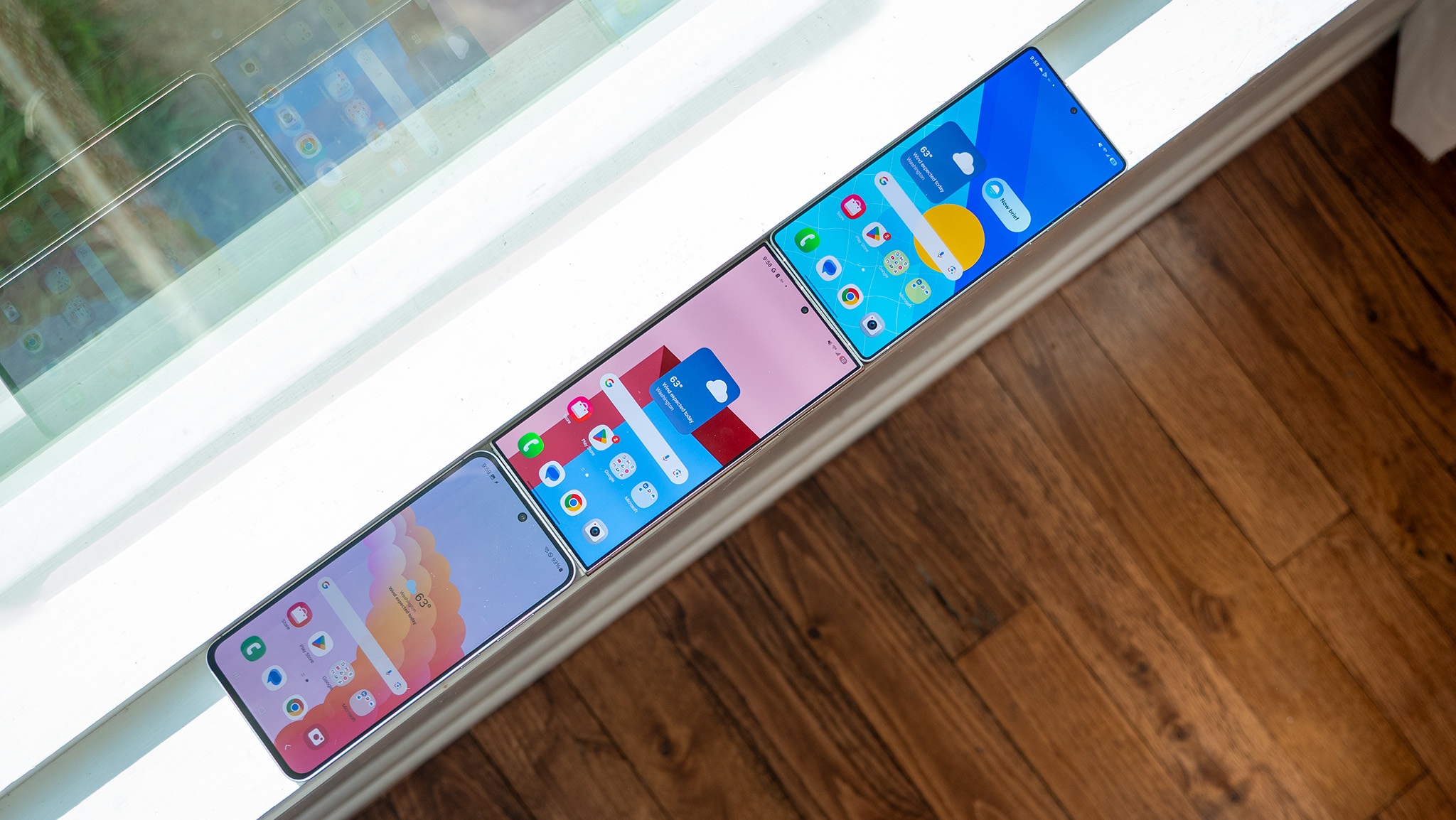
My regular show testing process includes a light-weight meter to find out brightness ranges and flickering potential, a microscope to see the subpixel association and if the show dithers, and a flashlight to pressure Excessive Brightness Mode so I can individually measure how a show behaves within the solar.
It was throughout this flashlight check — the place I activate the torch on a smartphone and maintain it close to the highest of the show — the place I discovered the S24 FE’s particular mode kick in. Theoretically, we might make Samsung flagships extra eye-friendly by forcing Excessive Brightness Mode on on a regular basis after which utilizing a display screen dimmer app to cut back the brightness a unique method, however we’ve got to determine how one can pressure HBM on a regular basis within the first place.
I checked all my common sources on Reddit, Telegram, and even amongst different teams of tech journalists and nobody appeared to know the way apart from what I had already finished. It isn’t precisely viable to stroll round holding a flashlight as much as your cellphone, so there needed to be one other method.
Excessive Brightness Mode is one thing that solely kicks in when a shiny mild supply (just like the solar) is shining on the show.
Looking the Google Play Retailer for apps that do the job returns plenty of outcomes. I spent cash on a number of apps however none of them labored. Google has modified quite a bit on the backend of Android in recent times and system-level features like HBM aren’t sometimes accessible to apps with out root entry, so this was a dead-end.
So I turned to ADB, the command line answer for all of your Android modification wants. I dialed down into /sys/class/backlight/panel and located the max_brightness setting I used to be on the lookout for. You may pressure HBM on some Android telephones by utilizing a command like “echo 1 >> /sys/class/backlight/panel/max_brightness” to alter this setting to 1, which suggests “enabled.”
Sadly, I obtained a “permission denied” response, which meant I needed to have root entry to do that. Rooting a Samsung cellphone is unhealthy information, because it journeys Knox safety and requires every kind of tomfoolery to get issues working correctly once more so, but once more, this was a dead-end.
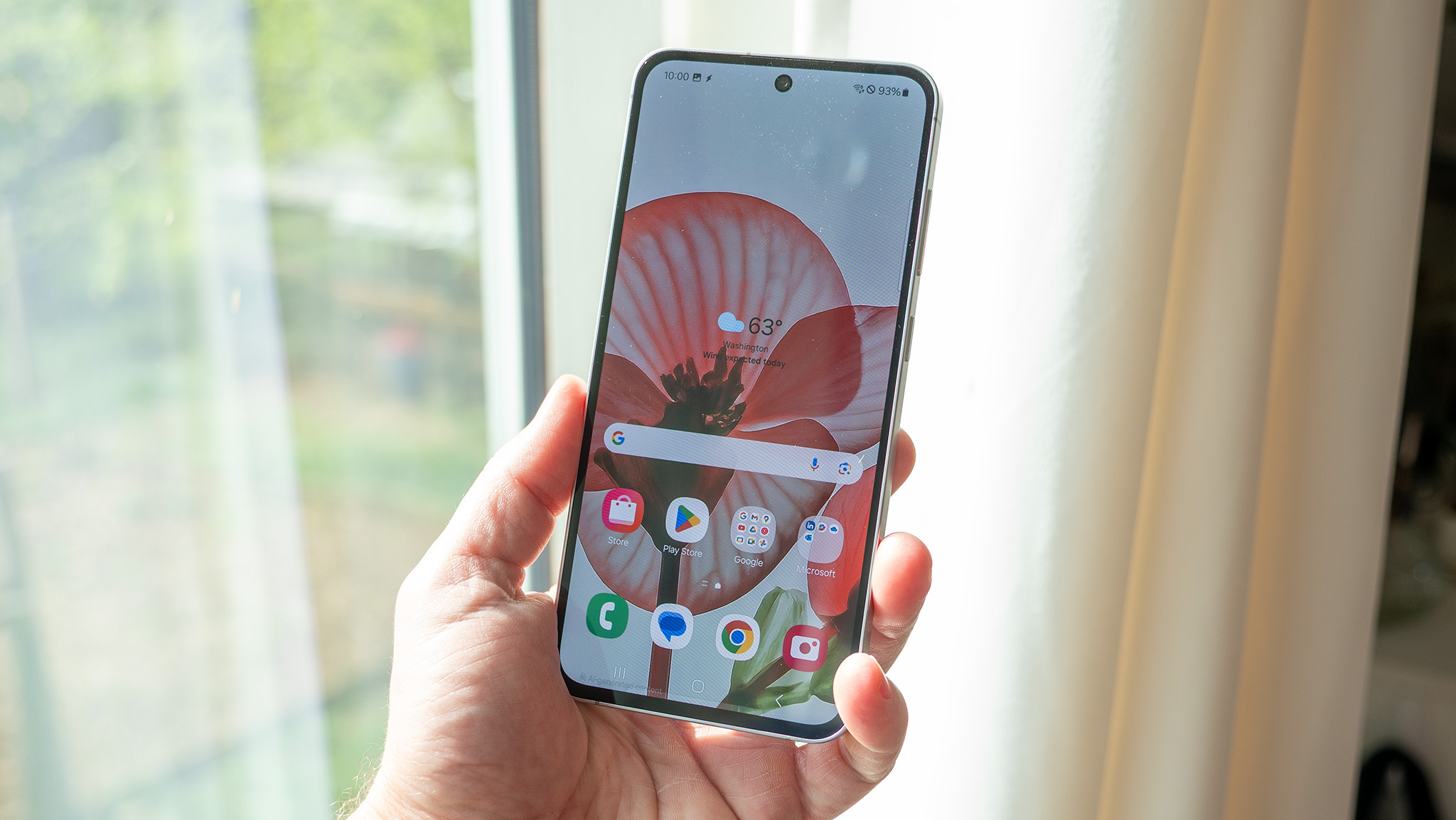
Excessive Brightness Mode usually doubles the show’s peak brightness, unleashing its full potential.
So then I obtained extra determined. What might probably trick a sensor into pondering it is within the solar? I attempted making use of a chunk of foil to the display screen, however that did not work. Gentle sensors are passive acceptors of sunshine, not producers, however I hoped the foil would trigger some form of loop by reflecting the show and inflicting it to assume it was underneath brighter lighting circumstances. Oh properly.
Possibly taping an LED to the display screen and masking it could work? Positive, this was a possible answer however it not solely requires some form of exterior energy provide for the LED, however it’s clearly not a full-time answer because it’s each cumbersome and trashy wanting.
No, the one actual answer is for Samsung to permit customers to allow Excessive Brightness Mode manually, one thing we would should petition en-masse to attain.
Excessive brightness, full potential
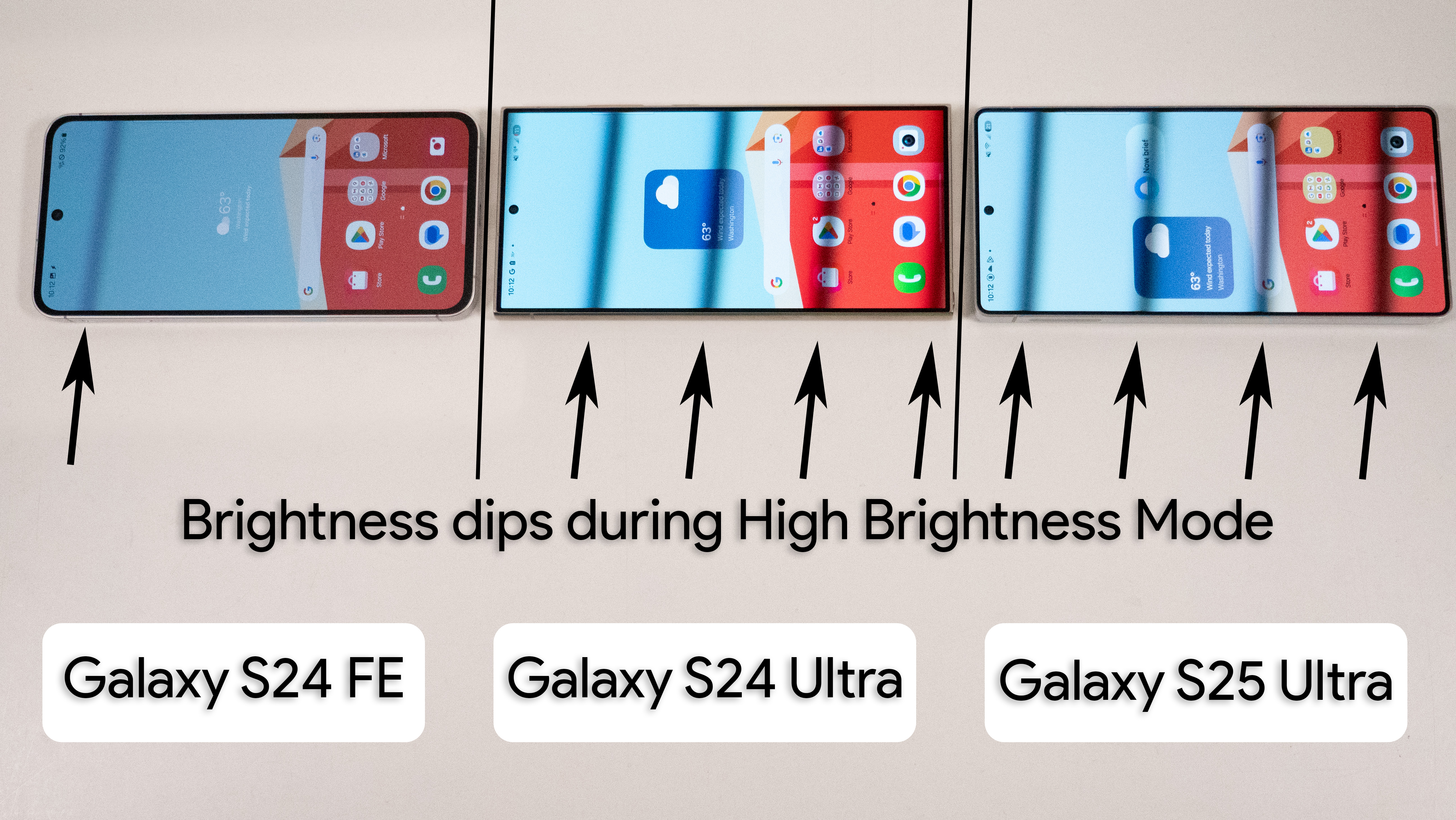
The Samsung Galaxy S24 FE’s excessive brightness mode is the one AMOLED-powered Samsung Galaxy cellphone I’ve in my posession that switches away from PWM dimming to DC dimming. If you happen to’re not acquainted with PWM dimming, here is the fast gist.
AMOLED has the power to rapidly activate and off its pixels, delivering higher movement decision with little to no ghosting, in contrast to some LCD panels. However AMOLED additionally has an issue: decreasing voltage can typically introduce decrease coloration accuracy and random noise patterns. Engineers have cleverly borrowed pulse width modulation (PWM) from different varieties of electronics — like followers and pumps — which turns the voltage on and off to “regulate” the quantity despatched to the element.
On the show facet, this primarily turns your cellphone’s show right into a strobe mild. Usually, you possibly can’t see this strobing as a result of it is finished so rapidly. As a substitute, your eyes understand the show as brighter or dimmer relying on how lengthy the show stays off throughout this flickering habits.
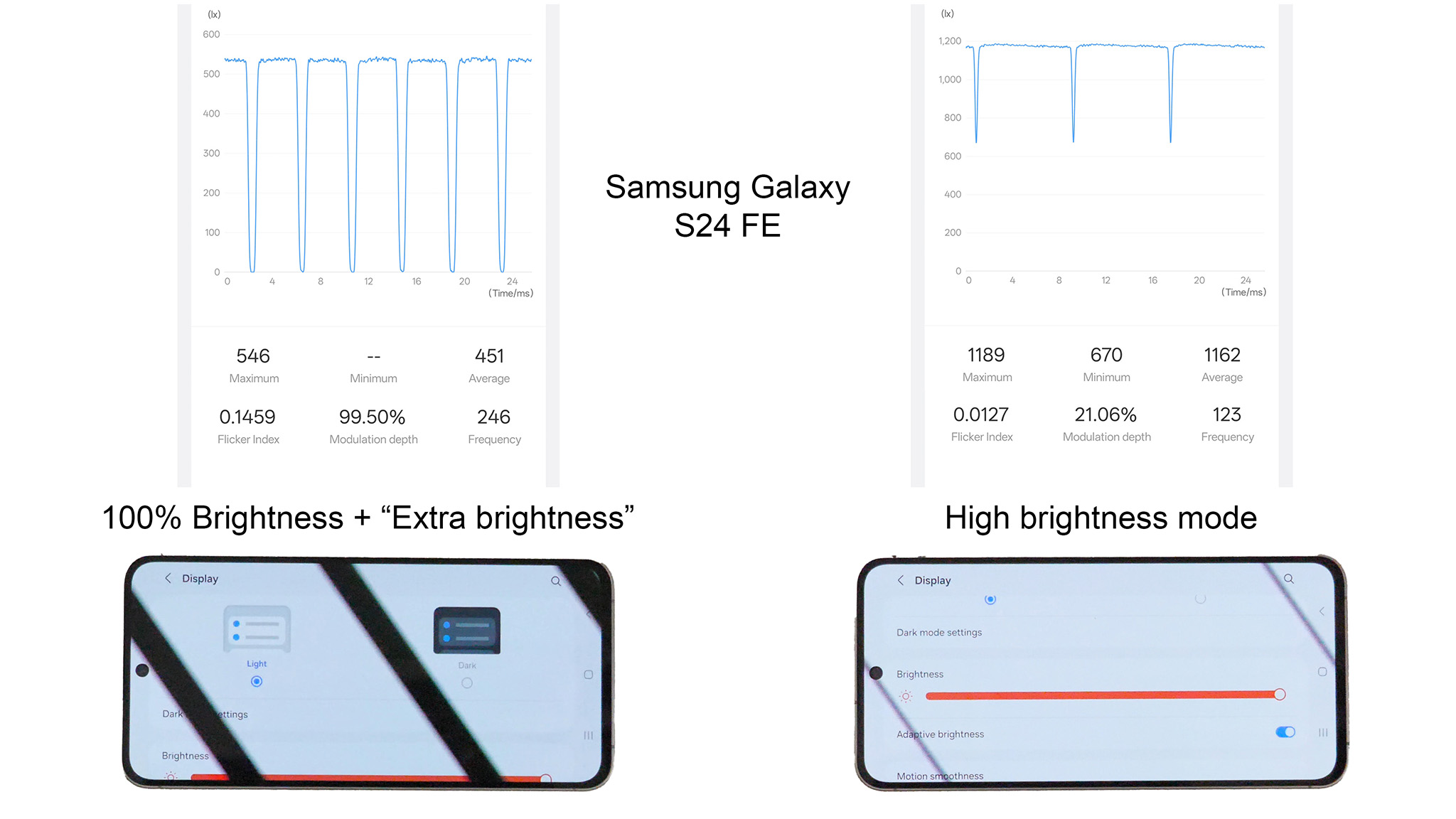
However whereas this habits ensures higher coloration accuracy and smoother particulars in some circumstances, it additionally introduces detrimental well being results and artificially limits the utmost brightness of your cellphone’s show. Flagship Samsung telephones just like the Galaxy S24 Extremely and Galaxy S25 Extremely by no means attain their precise most brightness potential as a result of they use PWM dimming always, even throughout excessive brightness mode.
DC-like dimming would not simply unlock the show’s full brightness potential, it additionally makes it extra eye-friendly for folks delicate to flickering.
You may see this illustrated within the picture above. On the left facet, you will see what Samsung calls “100% brightness” with the “further brightness” choice enabled. It is fairly apparent the show is not truly outputting “100%” brightness because the thick black strains detected with a 1/6400 digicam shutter velocity present how lengthy the show stays off in the course of the PWM dimming cycle. Clearly, “100%” on this case is an arbitrary quantity crafted by Samsung relatively than the precise most output of the show.
The Galaxy S24 FE on the fitting is utilizing Excessive Brightness Mode, triggered by me holding a flashlight as much as the highest of the show for a couple of seconds. This recreates daylight circumstances and kicks the show as much as its precise most brightness which, primarily based on my measurements, is double the brightness stage of “100%” brightness.
Throughout this particular excessive brightness mode, the show stays on more often than not and would not use the tough PWM flickering cycle it sometimes makes use of in any respect different brightness ranges. This dimming methodology is called “DC-like” dimming on OLEDs as a result of it extra carefully follows how a standard lightbulb or LCD dims itself, which is considerably extra eye-friendly than the substitute strategies Samsung sometimes employs.
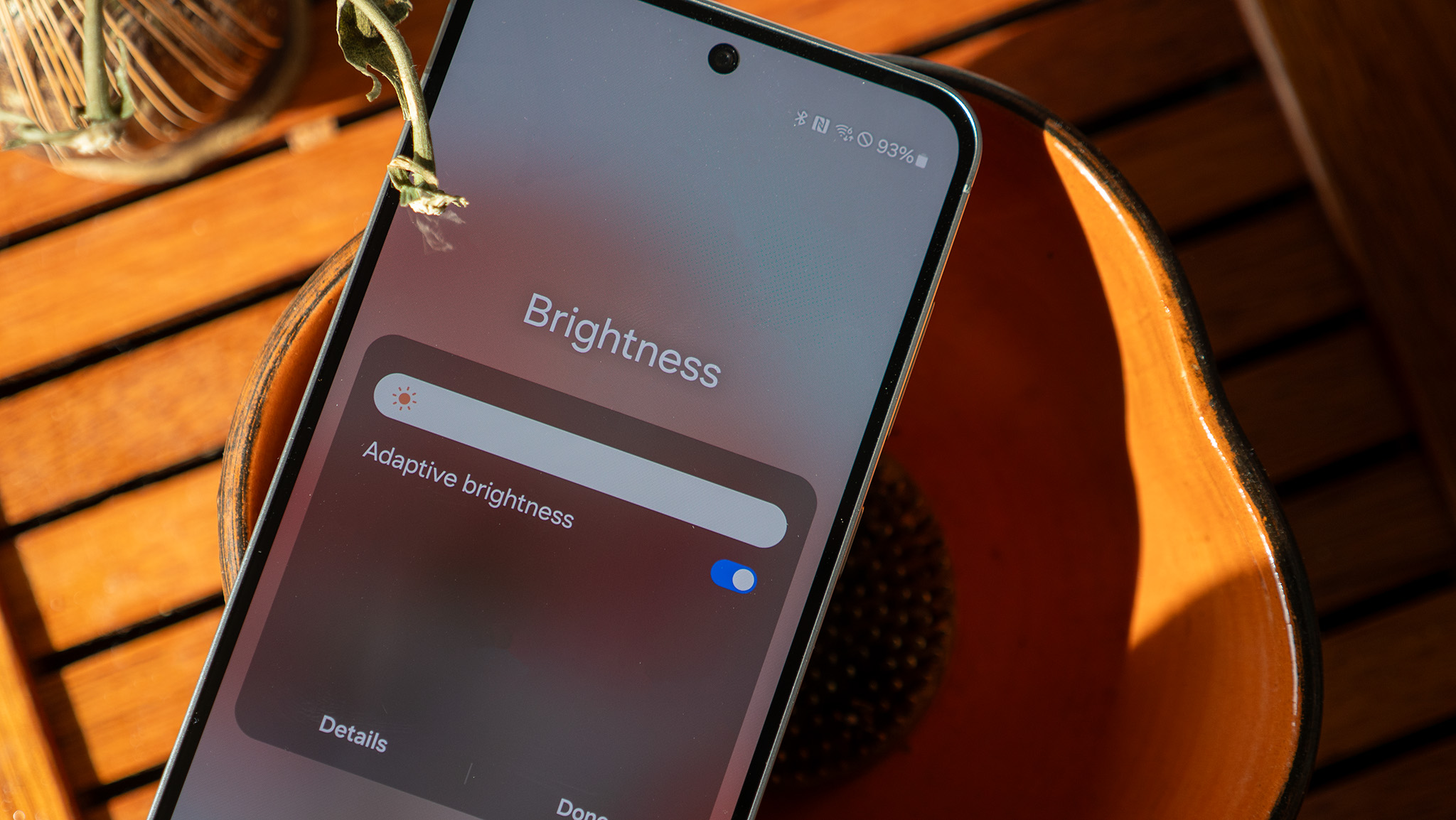
Samsung gadgets are generally about being all the things to all people, and it is time Samsung delivers on that promise with its shows.
It is truly fairly shocking that Samsung would not give customers full entry to the totally different brightness modes accessible, together with totally different dimming choices, given the corporate’s penchant for letting customers absolutely customise their telephones.
As a substitute, Samsung continues to restrict its shows in weird methods. Not solely do you solely have entry to about half the potential brightness of your show — or much less on the Extremely fashions — however you are pressured to make use of dangerous low-Hz PWM dimming on most Samsung telephones.
Samsung, it is time to give customers the complete vary of selections they need on their shows. That “further brightness” setting ought to imply enabling Excessive Brightness Mode, not some arbitrary quantity you provide you with. Customers needs to be allowed to decide on the dimming methodology that works for them, not simply the one you determine on an arbitrary foundation. Samsung gadgets are generally about being all the things to all people, and it is time Samsung delivers on that promise with its shows.

